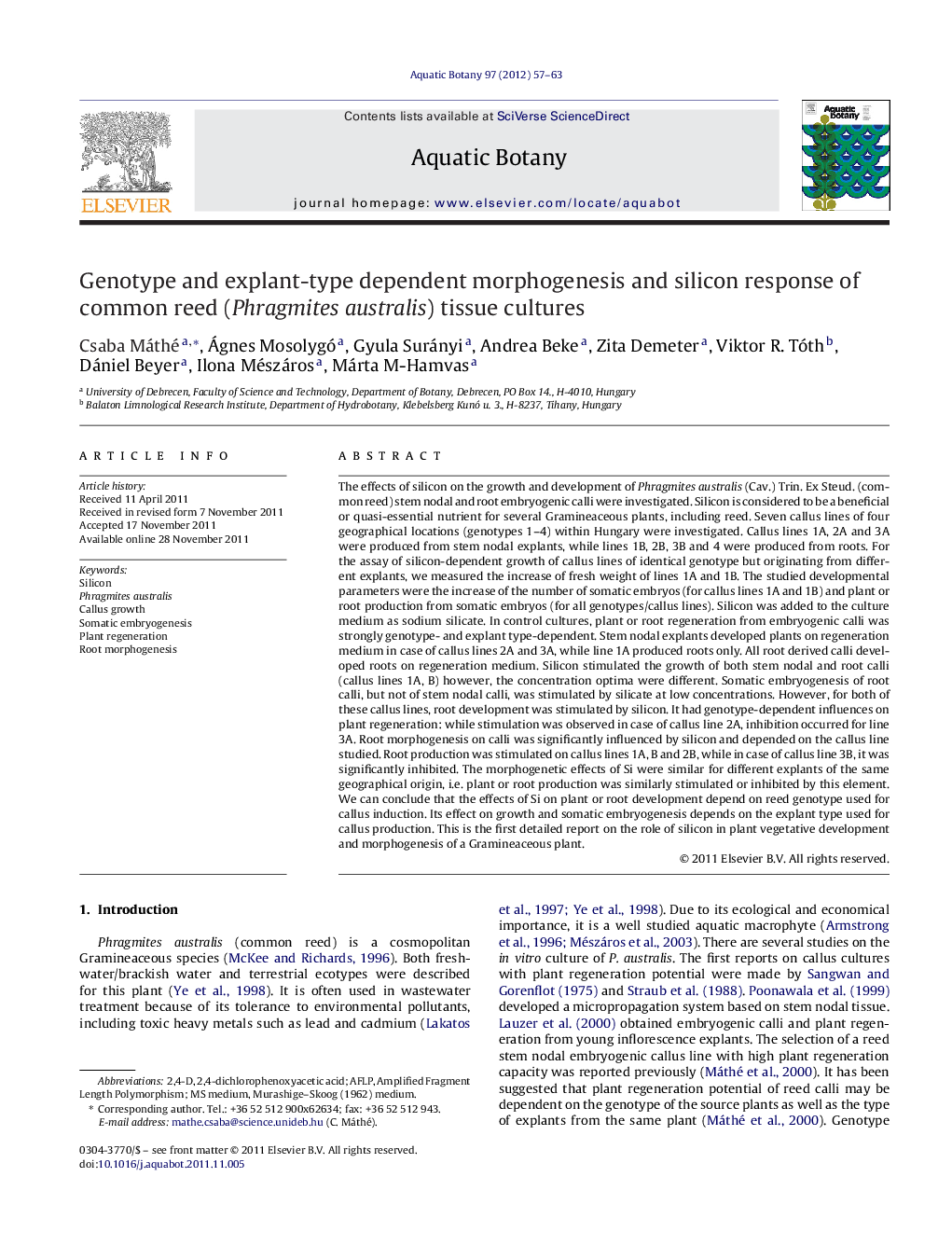| کد مقاله | کد نشریه | سال انتشار | مقاله انگلیسی | نسخه تمام متن |
|---|---|---|---|---|
| 4528063 | 1324280 | 2012 | 7 صفحه PDF | دانلود رایگان |

The effects of silicon on the growth and development of Phragmites australis (Cav.) Trin. Ex Steud. (common reed) stem nodal and root embryogenic calli were investigated. Silicon is considered to be a beneficial or quasi-essential nutrient for several Gramineaceous plants, including reed. Seven callus lines of four geographical locations (genotypes 1–4) within Hungary were investigated. Callus lines 1A, 2A and 3A were produced from stem nodal explants, while lines 1B, 2B, 3B and 4 were produced from roots. For the assay of silicon-dependent growth of callus lines of identical genotype but originating from different explants, we measured the increase of fresh weight of lines 1A and 1B. The studied developmental parameters were the increase of the number of somatic embryos (for callus lines 1A and 1B) and plant or root production from somatic embryos (for all genotypes/callus lines). Silicon was added to the culture medium as sodium silicate. In control cultures, plant or root regeneration from embryogenic calli was strongly genotype- and explant type-dependent. Stem nodal explants developed plants on regeneration medium in case of callus lines 2A and 3A, while line 1A produced roots only. All root derived calli developed roots on regeneration medium. Silicon stimulated the growth of both stem nodal and root calli (callus lines 1A, B) however, the concentration optima were different. Somatic embryogenesis of root calli, but not of stem nodal calli, was stimulated by silicate at low concentrations. However, for both of these callus lines, root development was stimulated by silicon. It had genotype-dependent influences on plant regeneration: while stimulation was observed in case of callus line 2A, inhibition occurred for line 3A. Root morphogenesis on calli was significantly influenced by silicon and depended on the callus line studied. Root production was stimulated on callus lines 1A, B and 2B, while in case of callus line 3B, it was significantly inhibited. The morphogenetic effects of Si were similar for different explants of the same geographical origin, i.e. plant or root production was similarly stimulated or inhibited by this element. We can conclude that the effects of Si on plant or root development depend on reed genotype used for callus induction. Its effect on growth and somatic embryogenesis depends on the explant type used for callus production. This is the first detailed report on the role of silicon in plant vegetative development and morphogenesis of a Gramineaceous plant.
► The morphogenesis and silicon response of P. australis embryogenic callus cultures were studied.
► Plant regeneration potential depended on the genotype of explants.
► Silicon stimulated the growth of both stem nodal and root calli in a concentration dependent manner.
► Silicon stimulated somatic embryogenesis of root calli.
► Silicon influenced morphogenesis in a genotype-dependent manner.
Journal: Aquatic Botany - Volume 97, Issue 1, February 2012, Pages 57–63